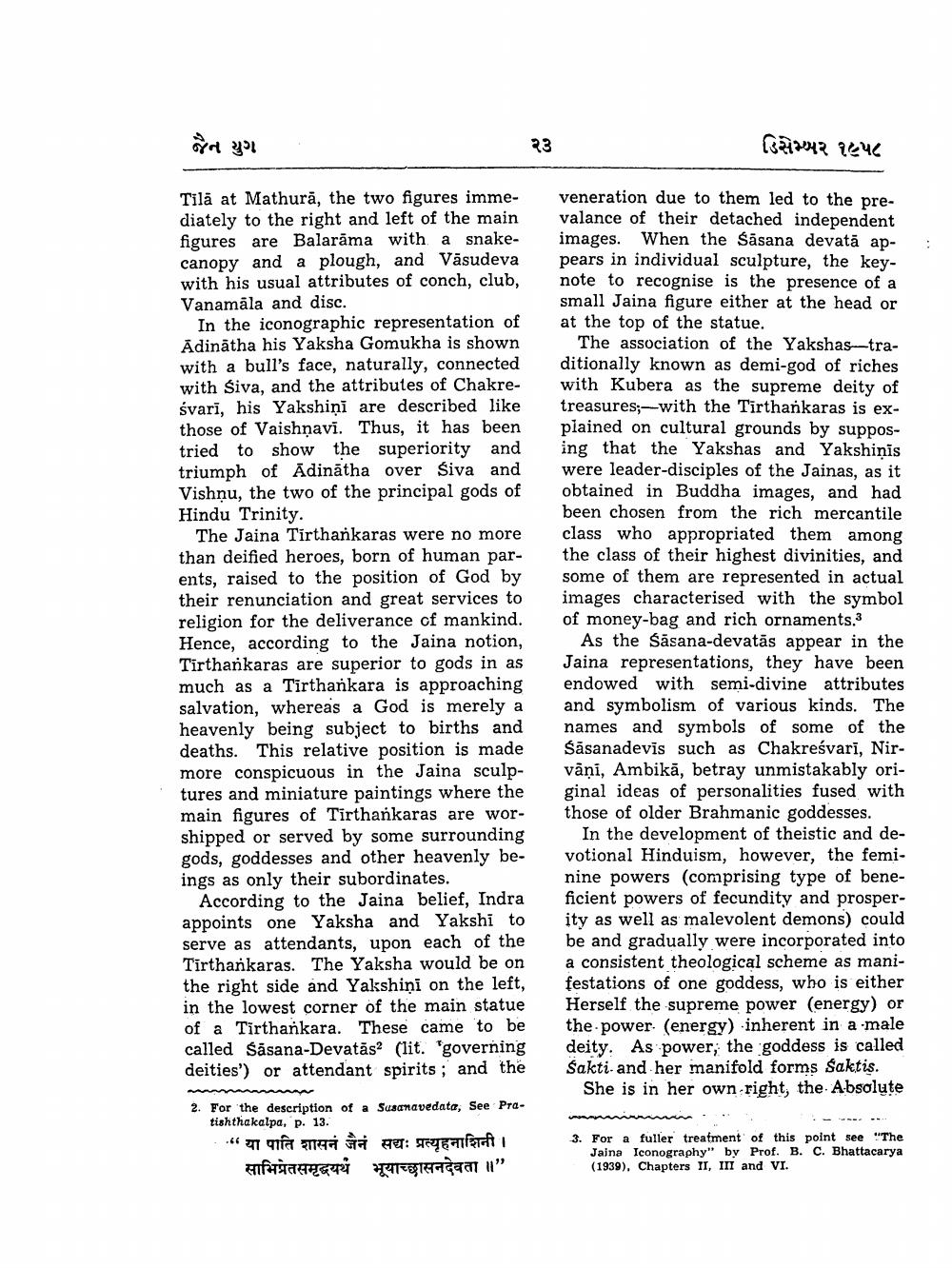________________
જૈન યુગ
Tila at Mathura, the two figures immediately to the right and left of the main figures are Balarama with a snakecanopy and a plough, and Vasudeva with his usual attributes of conch, club, Vanamala and disc.
In the iconographic representation of Adinatha his Yaksha Gomukha is shown with a bull's face, naturally, connected with Siva, and the attributes of Chakreśvari, his Yakshini are described like those of Vaishnavi. Thus, it has been tried to show the superiority and triumph of Adinatha over Śiva and Vishnu, the two of the principal gods of Hindu Trinity.
The Jaina Tirthankaras were no more than deified heroes, born of human parents, raised to the position of God by their renunciation and great services to religion for the deliverance of mankind. Hence, according to the Jaina notion, Tirthankaras are superior to gods in as much as a Tirthankara is approaching salvation, whereas a God is merely a heavenly being subject to births and deaths. This relative position is made more conspicuous in the Jaina sculptures and miniature paintings where the main figures of Tirthankaras are worshipped or served by some surrounding gods, goddesses and other heavenly beings as only their subordinates.
According to the Jaina belief, Indra appoints one Yaksha and Yakshi to serve as attendants, upon each of the Tirthankaras. The Yaksha would be on the right side and Yakshini on the left, in the lowest corner of the main statue of a Tirthankara. These came to be called Sasana-Devatās? (lit. 'governing deities') or attendant spirits; and the
2. For the description of a Susanavedata, See Pratishthakalpa, p. 13.
"या पाति शासन जैनं सद्यः प्रत्युनाशिनी । साभिप्रेतसमृद्धयर्थं भूयाच्छासनदेवता ॥”
23
ડિસેમ્બર ૧૯૫૮
veneration due to them led to the prevalance of their detached independent images. When the Sasana devatā appears in individual sculpture, the keynote to recognise is the presence of a small Jaina figure either at the head or at the top of the statue.
The association of the Yakshas-traditionally known as demi-god of riches. with Kubera as the supreme deity of treasures; with the Tirthankaras is explained on cultural grounds by supposing that the Yakshas and Yakshinis were leader-disciples of the Jainas, as it obtained in Buddha images, and had been chosen from the rich mercantile class who appropriated them among the class of their highest divinities, and some of them are represented in actual images characterised with the symbol of money-bag and rich ornaments.3
As the Sasana-devatās appear in the Jaina representations, they have been endowed with semi-divine attributes and symbolism of various kinds. The names and symbols of some of the Sāsanadevis such as Chakreśvari, Nirvāni, Ambikā, betray unmistakably original ideas of personalities fused with those of older Brahmanic goddesses.
In the development of theistic and devotional Hinduism, however, the feminine powers (comprising type of beneficient powers of fecundity and prosperity as well as malevolent demons) could be and gradually were incorporated into a consistent theological scheme as manifestations of one goddess, who is either Herself the supreme power (energy) or the power (energy) inherent in a male deity. As power, the goddess is called Sakti and her manifold forms Saktis.
She is in her own right, the Absolute
3. For a fuller treatment of this point see "The Jaina Iconography" by Prof. B. C. Bhattacarya (1939), Chapters II, III and VI.




